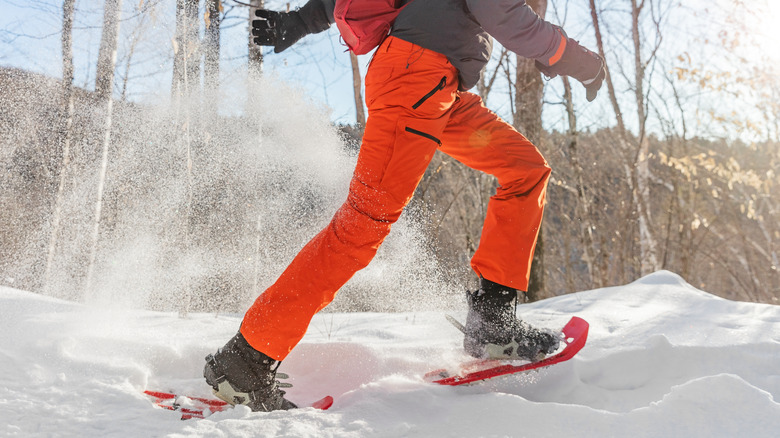Is It Better To Burn Calories In Cold Or Hot Weather? It's Complicated
If only working out and losing weight were easy. Sadly, that's just not the case; if you want to burn calories and shed those pounds, you're going to have to put some work in. But, no one wants to put in more work than necessary — that's why science has invested countless hours into finding the optimal means of working out and looking into how the body uses energy.
Science is nothing if not thorough. From the worst post-workout activities to debunking exercise myths, there's a lot that's known, but there are still some questions that continue to be confounding. One of those is whether it's better to workout in the heat or the cold. Which one burns more calories?
Whichever side you lean towards, the reasoning is the same: The body has to burn additional calories to maintain its core temperature of 98.6 degrees Fahrenheit. Cold workout advocates argue that the body has to use extra calories to raise the body temperature, while hot workout advocates believe that the metabolic cost of cooling the body burns extra calories. So who's right? Both are; that's why it's complicated.
Working out in hot weather
Contrary to what some may think, there isn't a lot of caloric burn involved in keeping cool. The body has two primary mechanisms of lowering its temperature. The most obvious one is perspiration, but less well known is vasodilation.
Perspiration, better known as sweating, is when glands all over the body excrete water in response to excess body temperature. When that water evaporates, absorbing heat from the surrounding air, it cools the body. Think about the chill you get when leaving the pool; that's what sweat does. Vasodilation is when the blood vessels close to your skin expand in diameter. There are a few mechanisms that push blood through your veins, and that process is one of the ways the body moves heat around; by broadening the cutaneous blood vessels, more heat can be dissipated out of the body.
Although these are both great methods of cooling the body, they aren't great at burning calories. Sweating doesn't burn any calories, but the water loss may help you lose weight in the short term. Vasodilation is mediated by smooth muscles that line the blood vessels, which burns calories, but not a lot.
Working out in cold weather
Compared to hot weather, cold weather exercise has a bit more going for it, and for a few reasons. One of the body's primary responses to cold is to limit heat loss. Whereas the body dilates cutaneous blood vessels to allow heat to escape, it contracts them to help keep heat in. This doesn't metabolize a lot of calories, but it does have some effect.
The other main way the body responds to the cold is by generating heat, or thermogenesis. The most visible form this takes is shivering, which is essentially just involuntary muscle contractions which create heat in the body. Shivering can burn around 400 calories per hour, but it's not an effective replacement for diet and exercise.
So, on the whole, cold workouts are a bit better at burning calories, but they've also got one other thing going for them. Shivering induces the release of a hormone called irisin, which causes your body to convert normal, white fat into a more specialized form called brown fat. Whereas white fat is the energy reserve of the body, used for moving muscles and firing neurons, brown fat metabolizes white fat to generate heat. In other words, work out in the cold to take advantage of this method to burn calories and fat.


